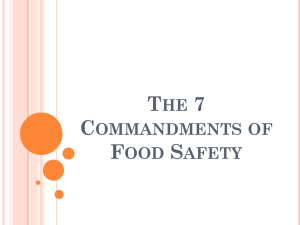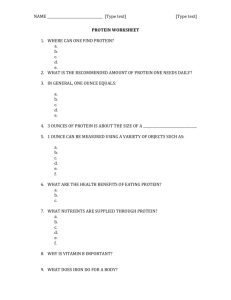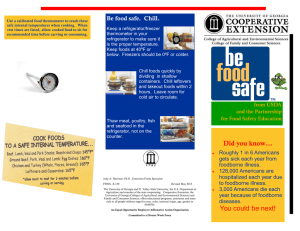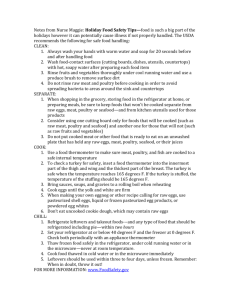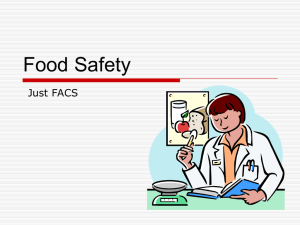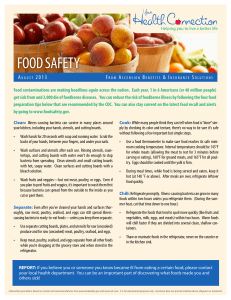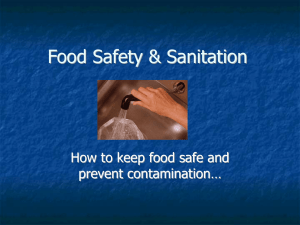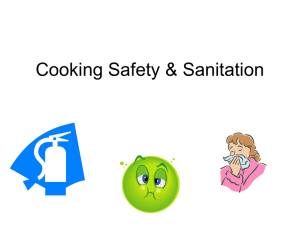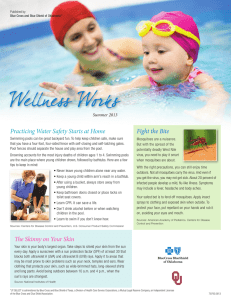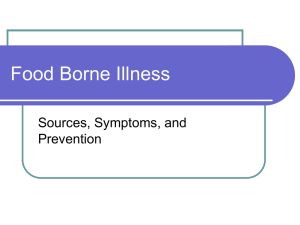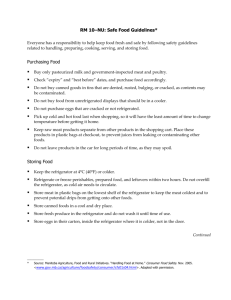Sandra Kelly Cain
advertisement
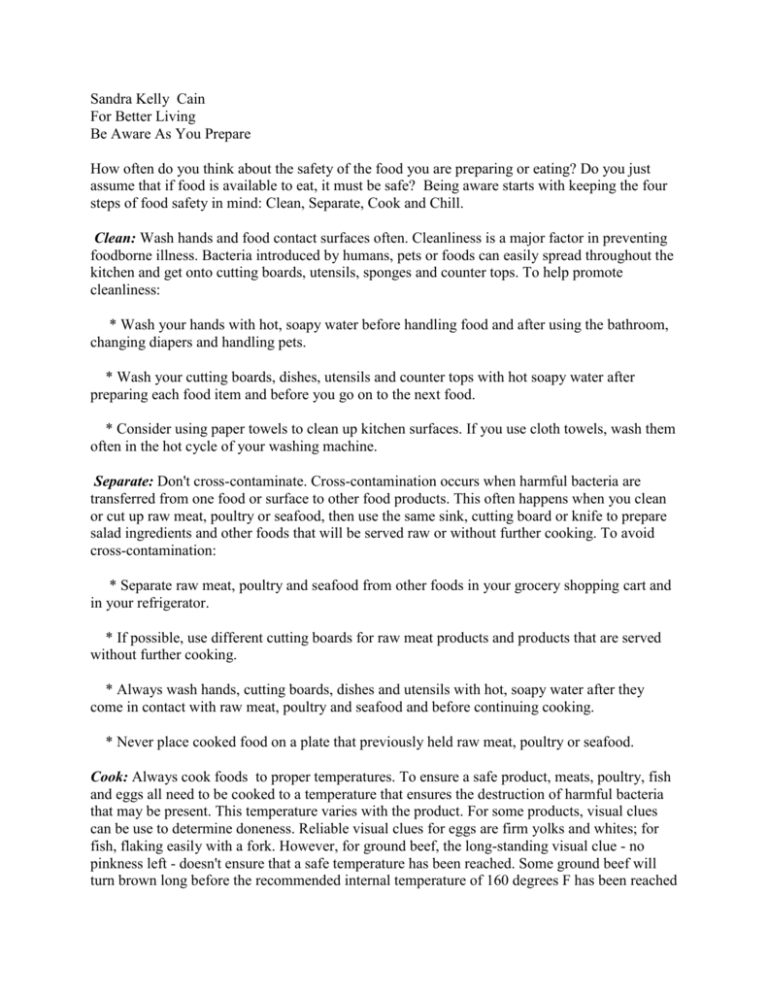
Sandra Kelly Cain For Better Living Be Aware As You Prepare How often do you think about the safety of the food you are preparing or eating? Do you just assume that if food is available to eat, it must be safe? Being aware starts with keeping the four steps of food safety in mind: Clean, Separate, Cook and Chill. Clean: Wash hands and food contact surfaces often. Cleanliness is a major factor in preventing foodborne illness. Bacteria introduced by humans, pets or foods can easily spread throughout the kitchen and get onto cutting boards, utensils, sponges and counter tops. To help promote cleanliness: * Wash your hands with hot, soapy water before handling food and after using the bathroom, changing diapers and handling pets. * Wash your cutting boards, dishes, utensils and counter tops with hot soapy water after preparing each food item and before you go on to the next food. * Consider using paper towels to clean up kitchen surfaces. If you use cloth towels, wash them often in the hot cycle of your washing machine. Separate: Don't cross-contaminate. Cross-contamination occurs when harmful bacteria are transferred from one food or surface to other food products. This often happens when you clean or cut up raw meat, poultry or seafood, then use the same sink, cutting board or knife to prepare salad ingredients and other foods that will be served raw or without further cooking. To avoid cross-contamination: * Separate raw meat, poultry and seafood from other foods in your grocery shopping cart and in your refrigerator. * If possible, use different cutting boards for raw meat products and products that are served without further cooking. * Always wash hands, cutting boards, dishes and utensils with hot, soapy water after they come in contact with raw meat, poultry and seafood and before continuing cooking. * Never place cooked food on a plate that previously held raw meat, poultry or seafood. Cook: Always cook foods to proper temperatures. To ensure a safe product, meats, poultry, fish and eggs all need to be cooked to a temperature that ensures the destruction of harmful bacteria that may be present. This temperature varies with the product. For some products, visual clues can be use to determine doneness. Reliable visual clues for eggs are firm yolks and whites; for fish, flaking easily with a fork. However, for ground beef, the long-standing visual clue - no pinkness left - doesn't ensure that a safe temperature has been reached. Some ground beef will turn brown long before the recommended internal temperature of 160 degrees F has been reached and some will remain pink even at 160 degrees F. Because of this, food safety experts recommend using a clean thermometer to make sure meat and poultry products have reached safe internal temperatures. Chill: Refrigerate promptly. It is important to refrigerate foods quickly, because cold temperatures keep harmful bacteria from growing and multiplying. Use a refrigerator thermometer to make sure your refrigerator is between 35 and 40 degrees F and your freezer is at zero degrees F or below. If you have prepared extras or have leftovers, divide these into small, shallow containers and refrigerate quickly after preparation or service. And be careful not to overfill your refrigerator, which does a better job of keeping food cool and safe when air can circulate around the food. Source: Colorado Cooperative Extension Makeover Toffee Crunch Dessert 1 1/2 cups skim milk 1 pkg. (1 oz.) sugar-free instant vanilla pudding mix 2 cartons (8 ozs. each) frozen whipped topping, fat-free, thawed 1 prepared angel food cake, cubed 4 toffee candy bars, crushed In a large bowl, whisk milk and pudding mix for 2 minutes. Let stand for 2 minutes. Stir in 2 cups whipped topping. Fold in remaining whipped topping. In a 9 x 13 dish, layer half of the cake cubes, pudding mixture and crushed candy bars. Repeat layers. Cover and refrigerate for at least 2 hours before serving. Nutrition Facts: 3/4 cup equals 219 calories, 3 g fat, 1 mg cholesterol, 366 mg sodium, 41 g carbohydrate, 1 g fiber, 5 g protein.
